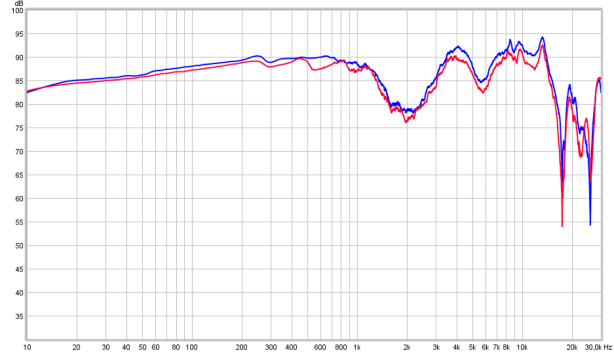As I mentioned in another thread, the pads on my 4-year old HE-560 headphones are wearing out. I use them at least a few hours a day and like the sound (after my own EQ) and like the pads, except they keep my ears a bit more toasty than I like after prolonged wearing.
Ordered the Dekoni Elite Hybrid replacement pads. Measuring the change on a flat plate comparing to stock pads, there are some differences:

Blue line is a vector average of four sweeps in REW with repositioning the phones on top of the plate for each sweep. I tried to get the best match I could between the old sweep and the new using white noise and real-time spectrum viewer (RTA). This is as close as I could get the two. At some point I'll compare them with in-ear mics, also.
Subjective: sounds good! Can't compare these directly to the original, but the Dekoni's seem just a tad brighter, and not at all in a negative way, just slightly more detailed. I kept the old EQ settings and they seem to work just fine. These didn't go much above 3k, so that makes sense. The pads feel cooler and a bit stiffer, apparently using memory foam inside. Putting them on feels comfortable, and my entire ear fits inside the pad, snug but not cramped. Seems like a good replacement pad!
Four scans with Dekoni pads:

Ordered the Dekoni Elite Hybrid replacement pads. Measuring the change on a flat plate comparing to stock pads, there are some differences:
Blue line is a vector average of four sweeps in REW with repositioning the phones on top of the plate for each sweep. I tried to get the best match I could between the old sweep and the new using white noise and real-time spectrum viewer (RTA). This is as close as I could get the two. At some point I'll compare them with in-ear mics, also.
Subjective: sounds good! Can't compare these directly to the original, but the Dekoni's seem just a tad brighter, and not at all in a negative way, just slightly more detailed. I kept the old EQ settings and they seem to work just fine. These didn't go much above 3k, so that makes sense. The pads feel cooler and a bit stiffer, apparently using memory foam inside. Putting them on feels comfortable, and my entire ear fits inside the pad, snug but not cramped. Seems like a good replacement pad!
Four scans with Dekoni pads:


